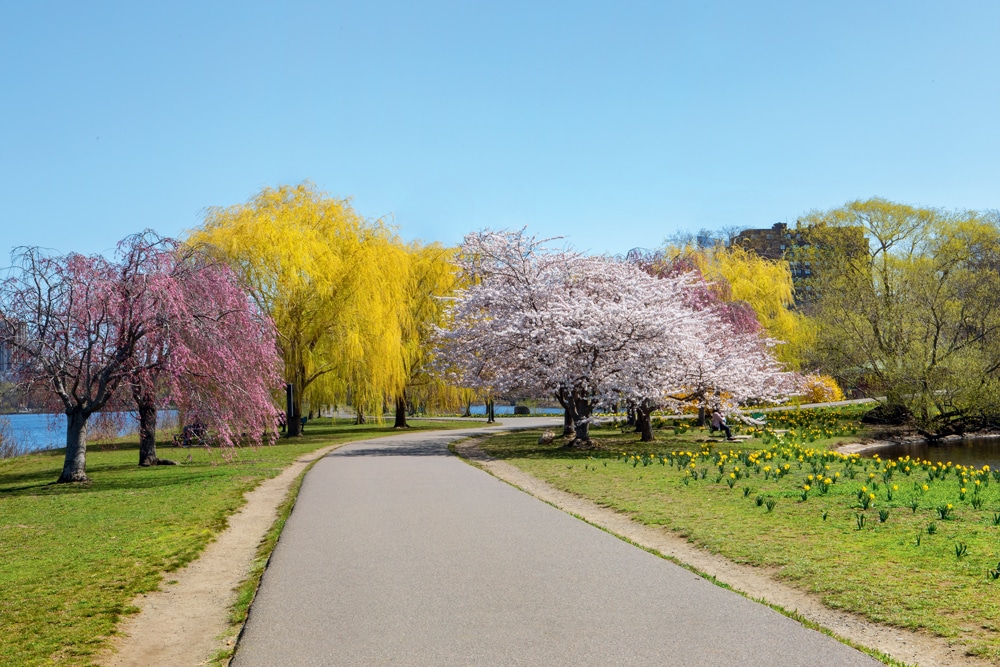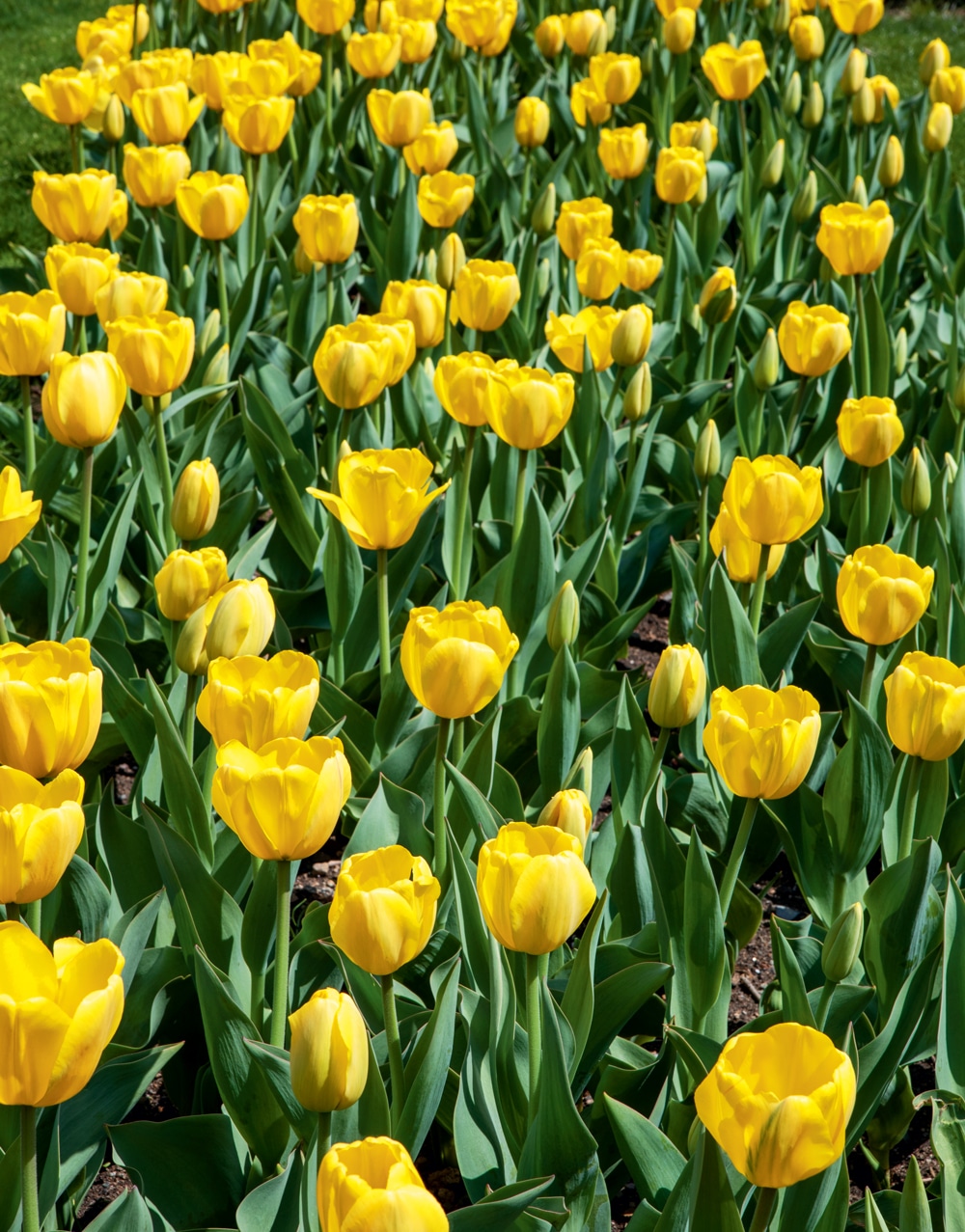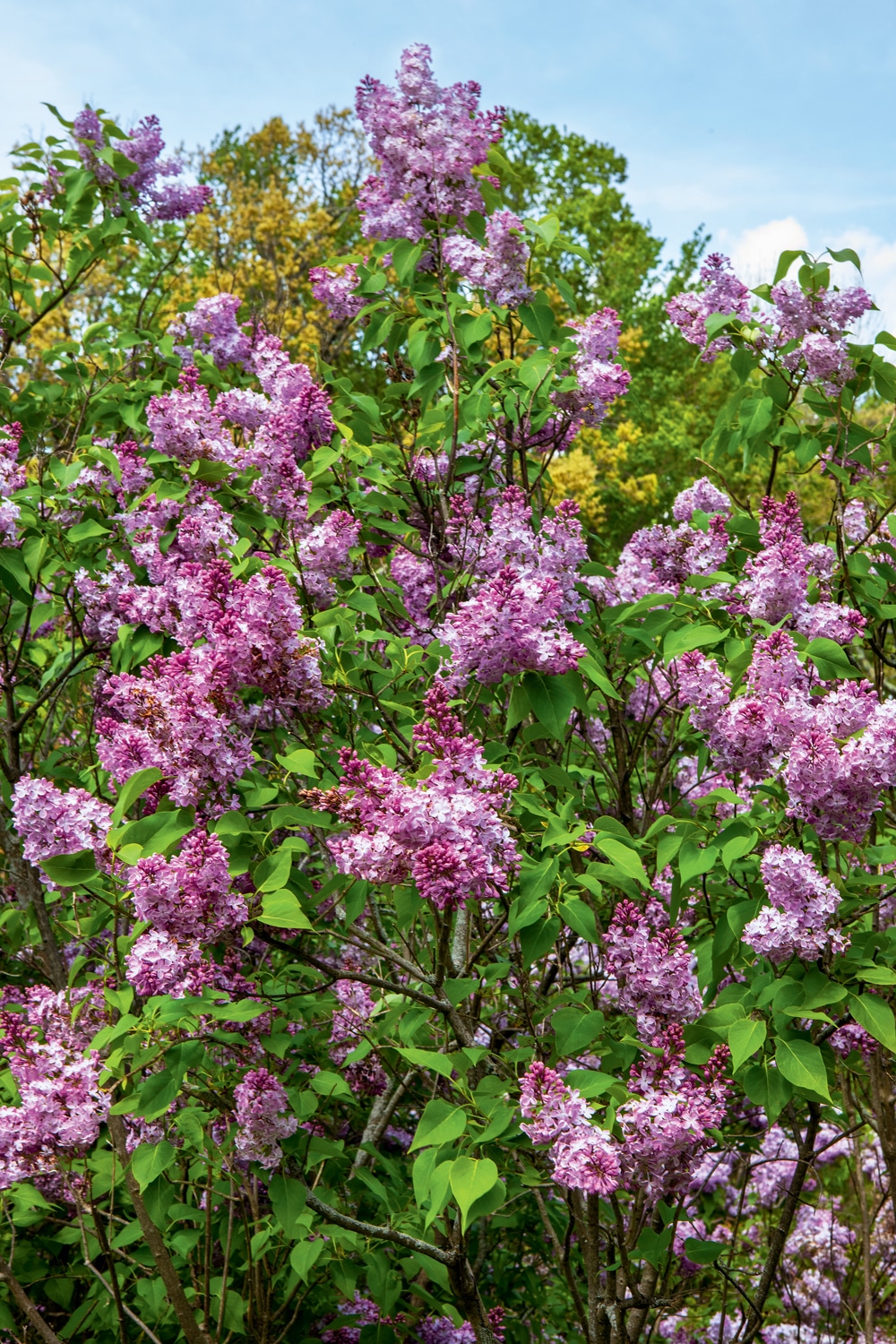Bloom Time | Spring Comes to the Boston Public Garden
Fifty feet of asphalt is only the most obvious divider between Boston’s famous downtown green spaces, the Common and the Public Garden. Born more than 200 years apart, they also diverge in their expression: one a freewheeling invitation to public life, the other a horticultural oasis rooted in Victorian-era decorum. But in his 22-year career […]

A pathway on the Charles River Esplanade invites strolling beneath a canopy of blooms.
Photo Credit : Adam DetourFifty feet of asphalt is only the most obvious divider between Boston’s famous downtown green spaces, the Common and the Public Garden. Born more than 200 years apart, they also diverge in their expression: one a freewheeling invitation to public life, the other a horticultural oasis rooted in Victorian-era decorum.
But in his 22-year career with the city’s Parks and Recreation Department, Anthony Hennessy has come to see them more like companion plantings.
“The Common is an area where people can go and just be whoever they want to be. They can shout as loud as they want, wear outrageous clothes, protest, sing. A person can go there and reflect on who they are,” he says. “Then when you enter the Public Garden, there’s this feeling of tranquility, and everything else sort of disappears. And it really makes you think about what people can do, the amazing things that individuals can accomplish.”
The city’s horticultural superintendent since 2013, Hennessy leads the team that makes the Public Garden, along with about 40 other sites across Boston, a showcase of gardening accomplishment. The springtime display gets under way in March, as they begin planting pansies and other early perennials from the parks department’s 13 greenhouses, and it becomes downright lavish by May, when 30,000 bulbs burst into life—the vast majority of them being tulips in the Public Garden, where they have been planted each year since the 1840s.

Photo Credit : Adam Detour

Photo Credit : Adam Detour
The tulip show is close to Hennessy’s heart not just because he’s a big backer of Boston traditions—which he admits he is—but also because of its message of hope. “You take this bulb, this plain little thing, like an onion, and bury it deep in the ground through the dead of winter,” he says. “And then when the signs of spring show up, and you see that first green and then a couple of weeks later, a beautiful flower… it’s like you know that everything’s going to be fine.”
Beyond the 24 manicured acres of the Public Garden, that kind of floral reassurance takes on all kinds of additional, equally marvelous forms when spring comes to Boston. The Arnold Arboretum in Jamaica Plain is famed for its 400-plus lilacs, which send their perfume across its 281 scenic acres starting in April; meanwhile, the cherry trees along the Charles River Esplanade are pinking up. Over in Boston’s Back Bay, historic brownstones are framed by growing drifts of magnolia blossoms.
And this spring, like the one before it, is bound to have a little extra resonance for the city’s residents and visitors than in years past, Hennessy predicts.

Photo Credit : Adam Detour
“More people are outside, they’re out in these parks, they’re just being outside in general,” says Hennessy, who is often out working in the beds and receives the public’s feedback firsthand. “When a random stranger comes over to you and compliments you and says, ‘I love what you’re doing, you make my commute to work special’—I mean, that’s just the best thing.”
For more on the Public Garden, go to boston.gov/parks/public-garden; for details on visiting theArnold Arboretum, go to arboretum.harvard.edu.
Jenn Johnson
Jenn Johnson is the managing editor of Yankee magazine. During her career she has worked at or freelanced for a number of New England publications, including Boston magazine, the Boston Herald, the Portsmouth Herald, and the late Boston Phoenix.
More by Jenn Johnson

